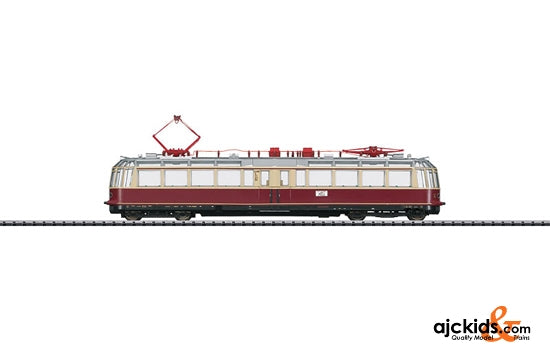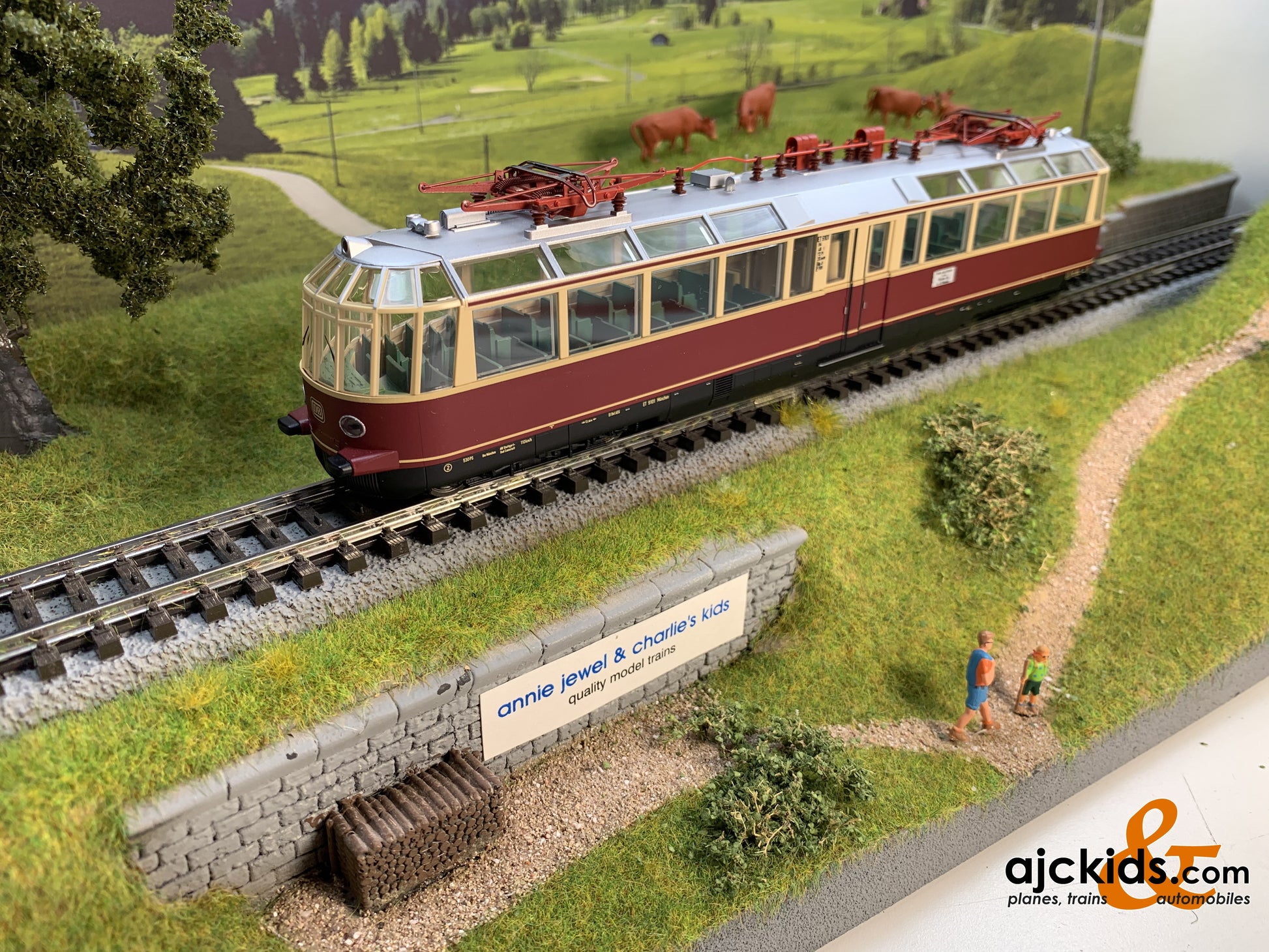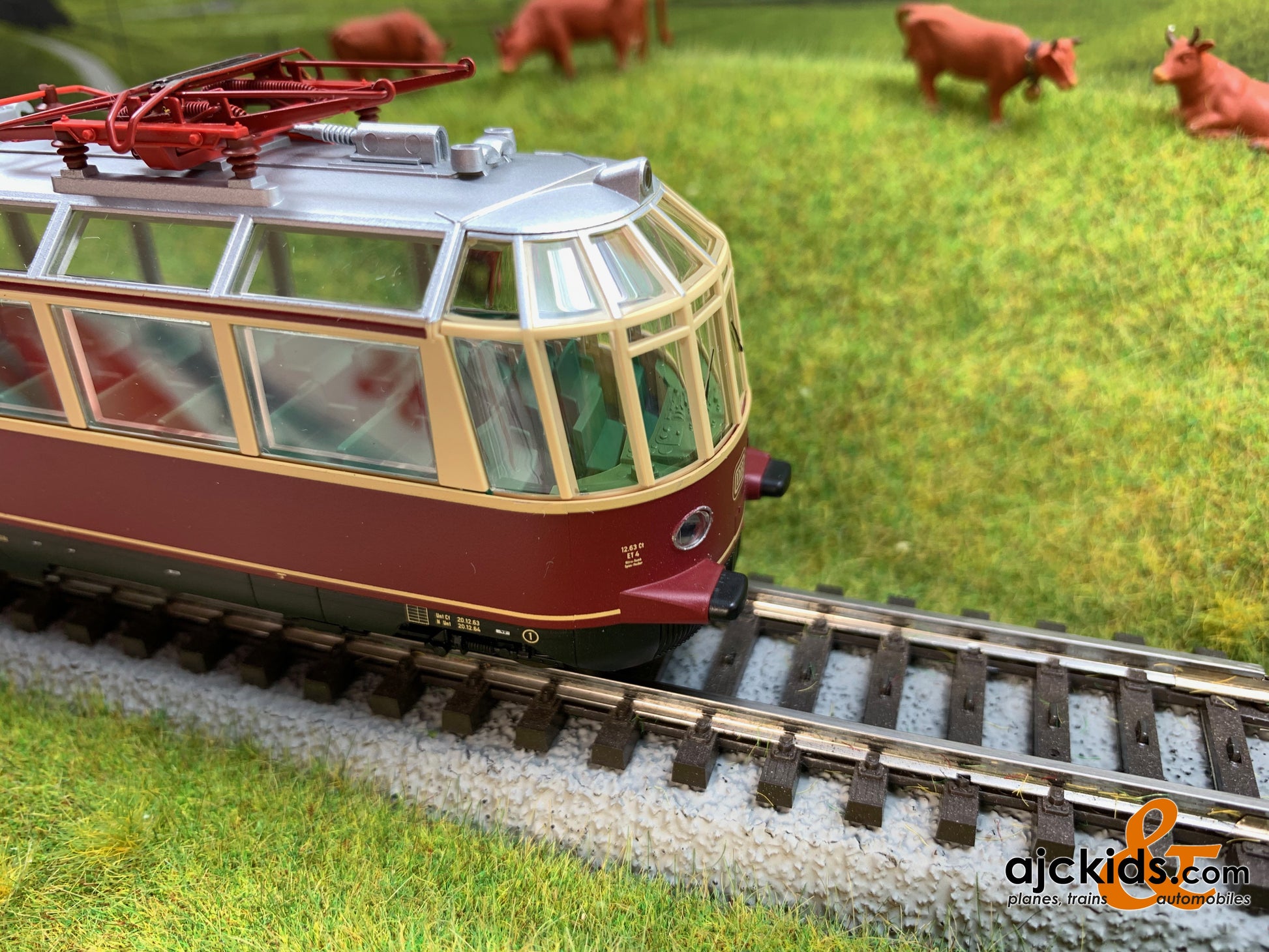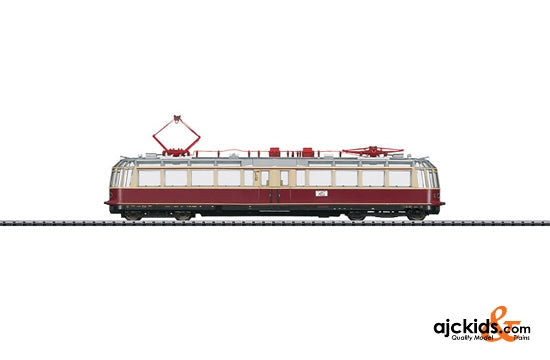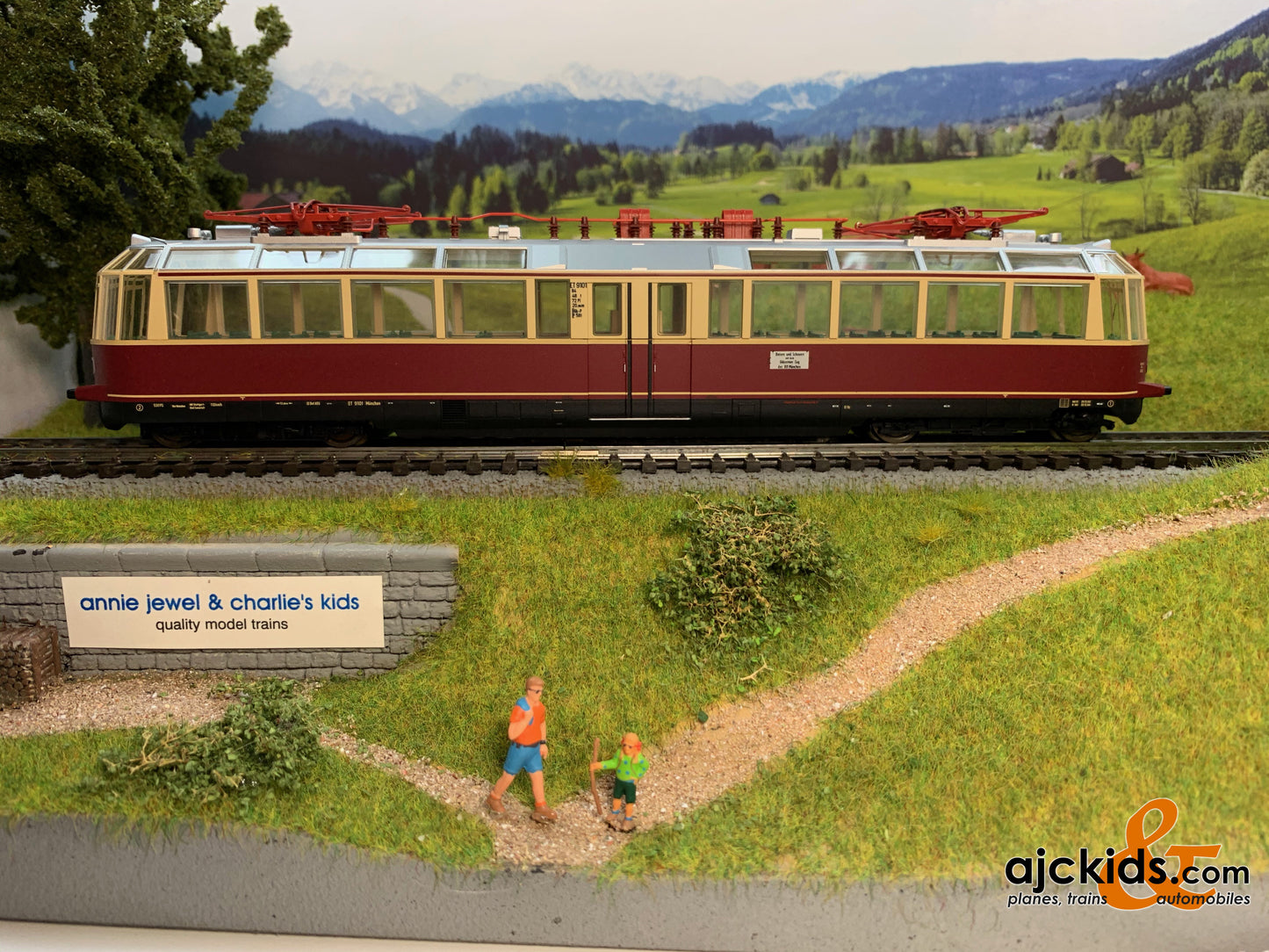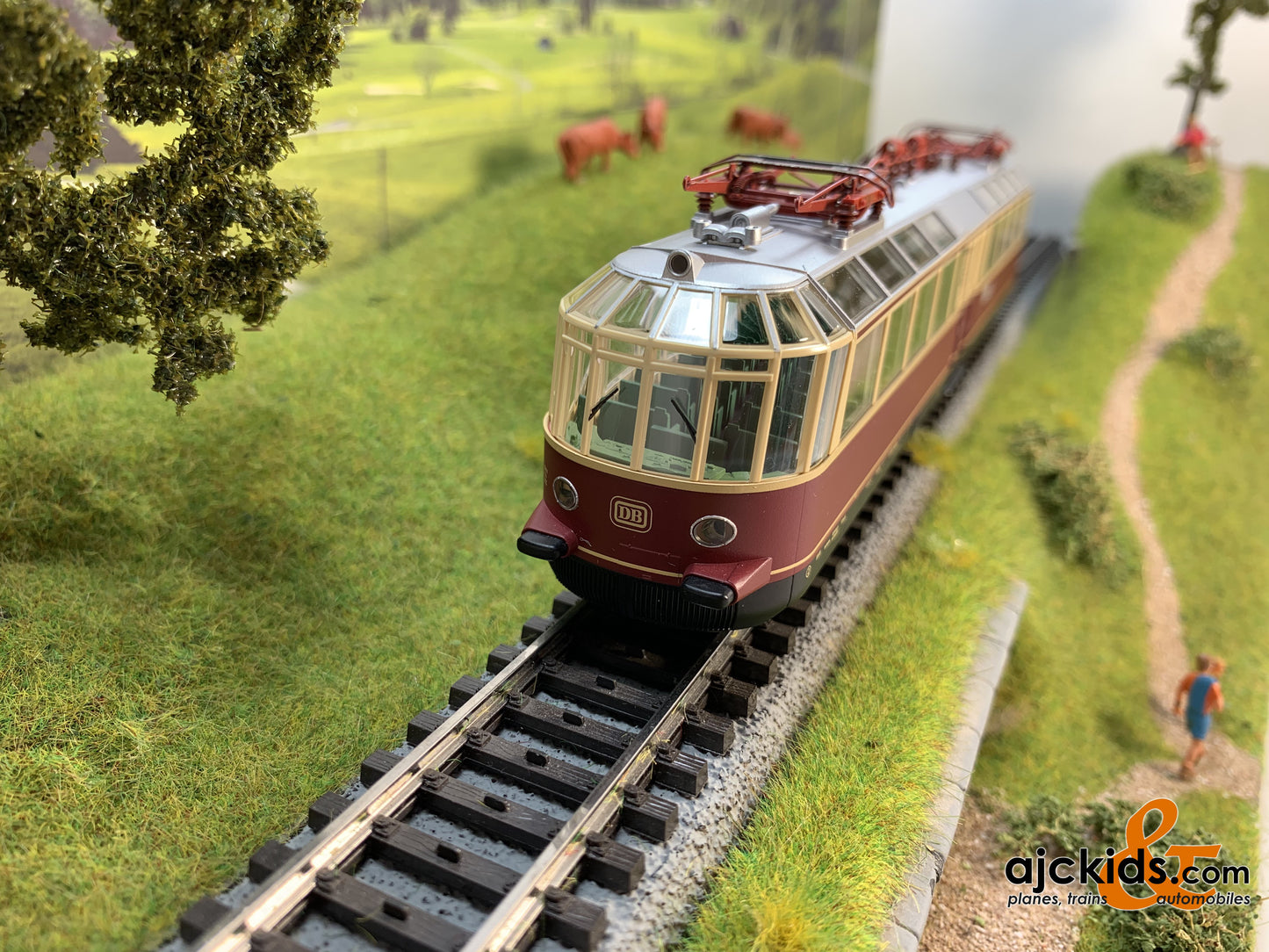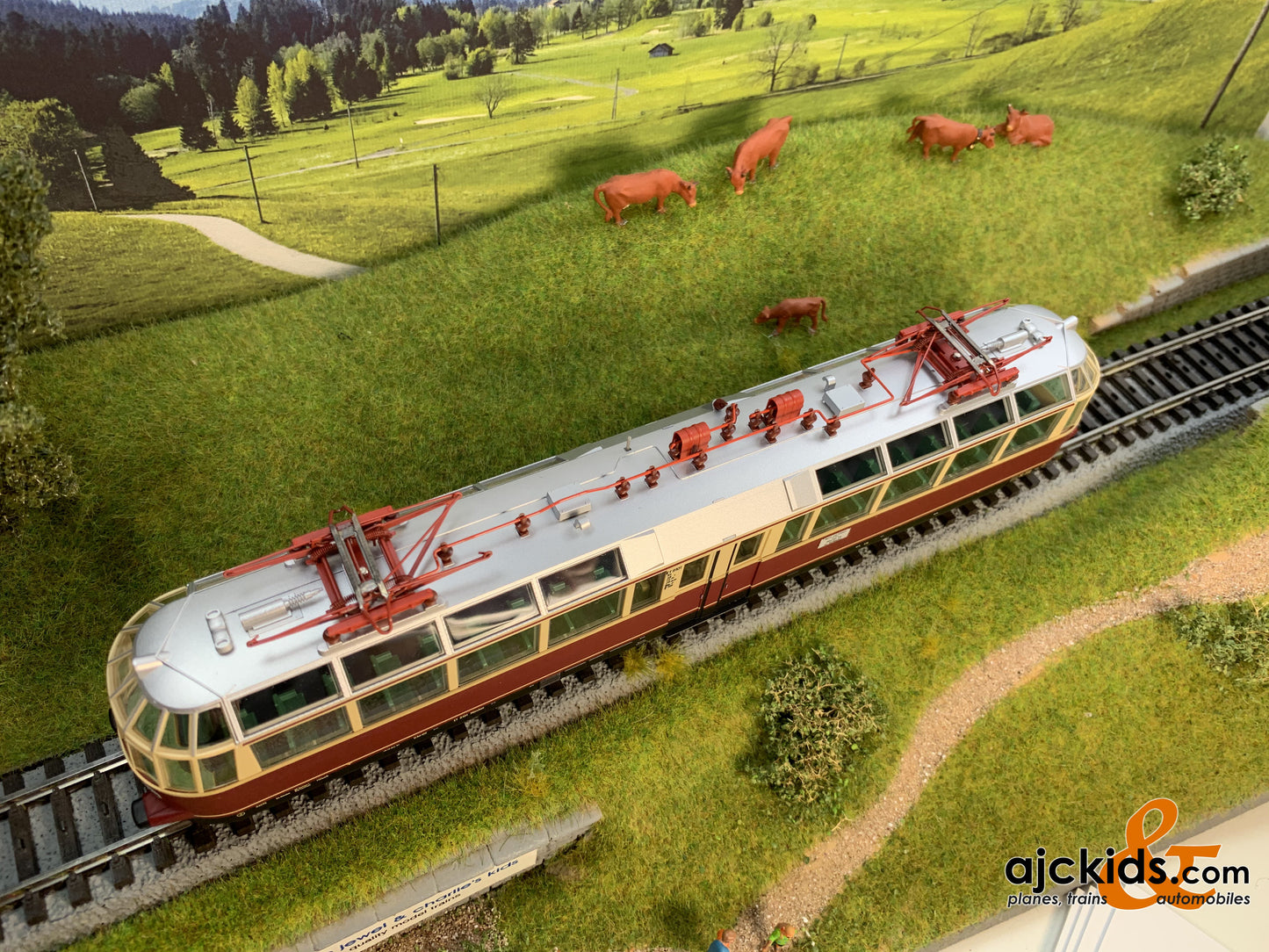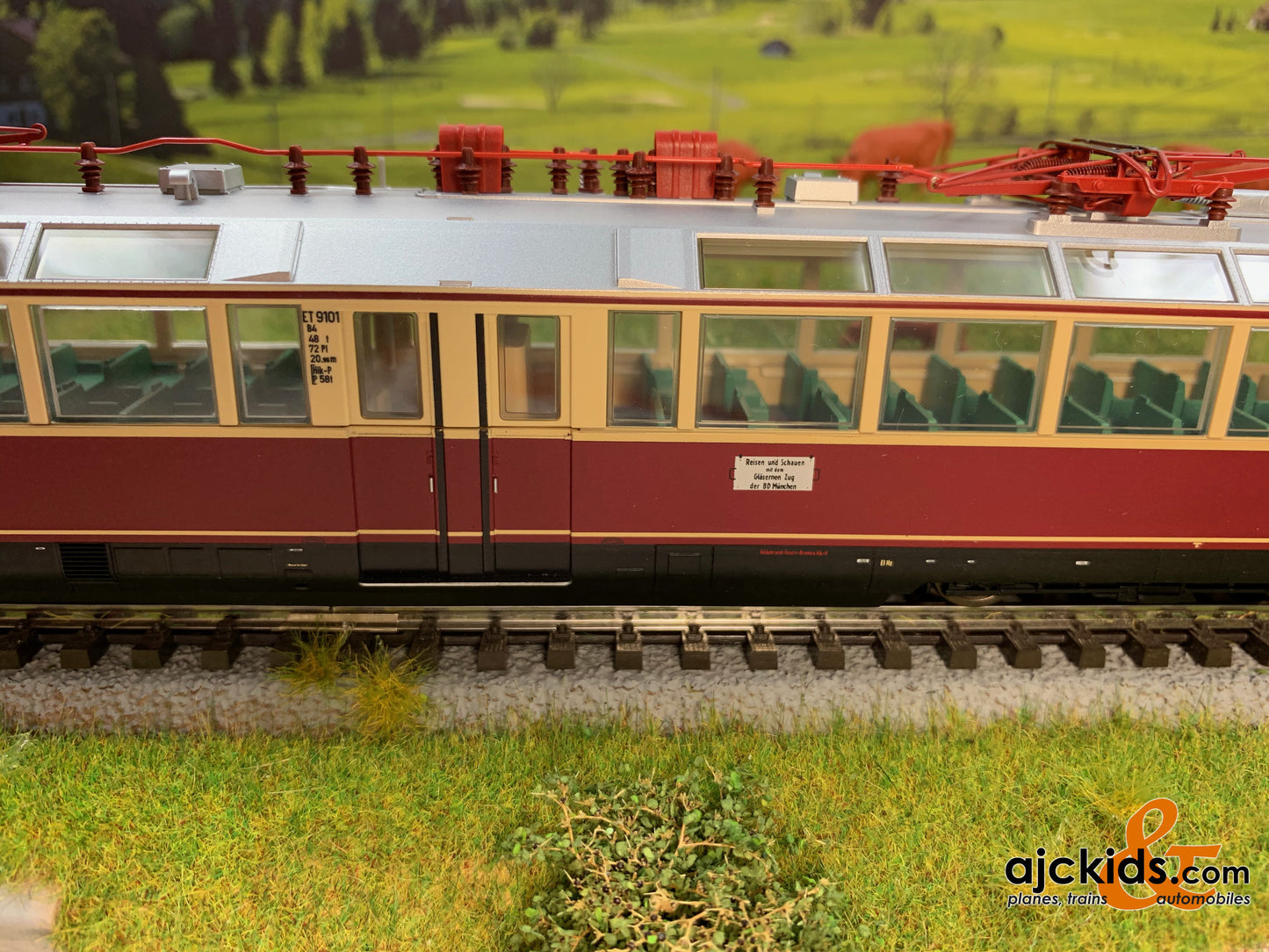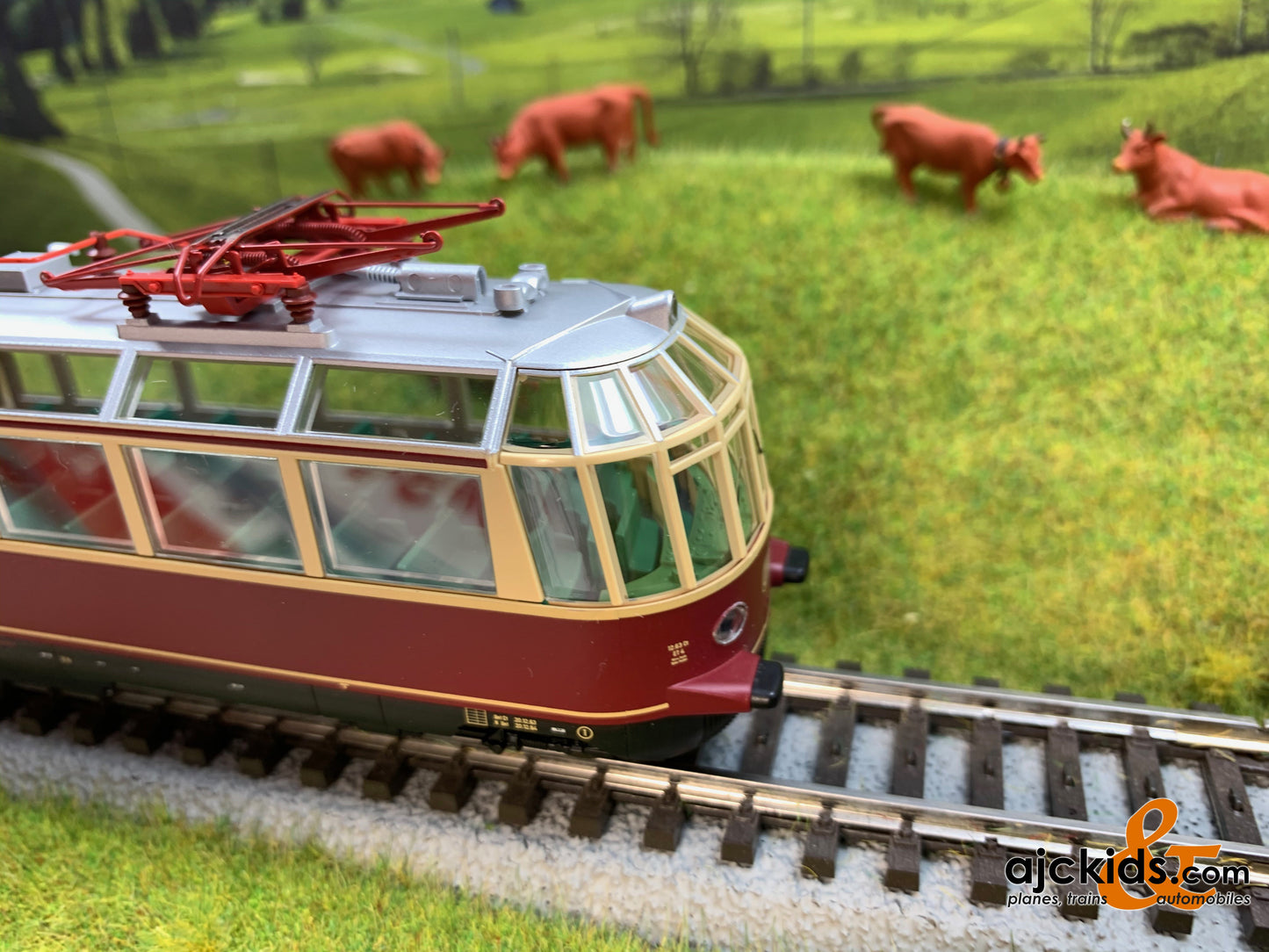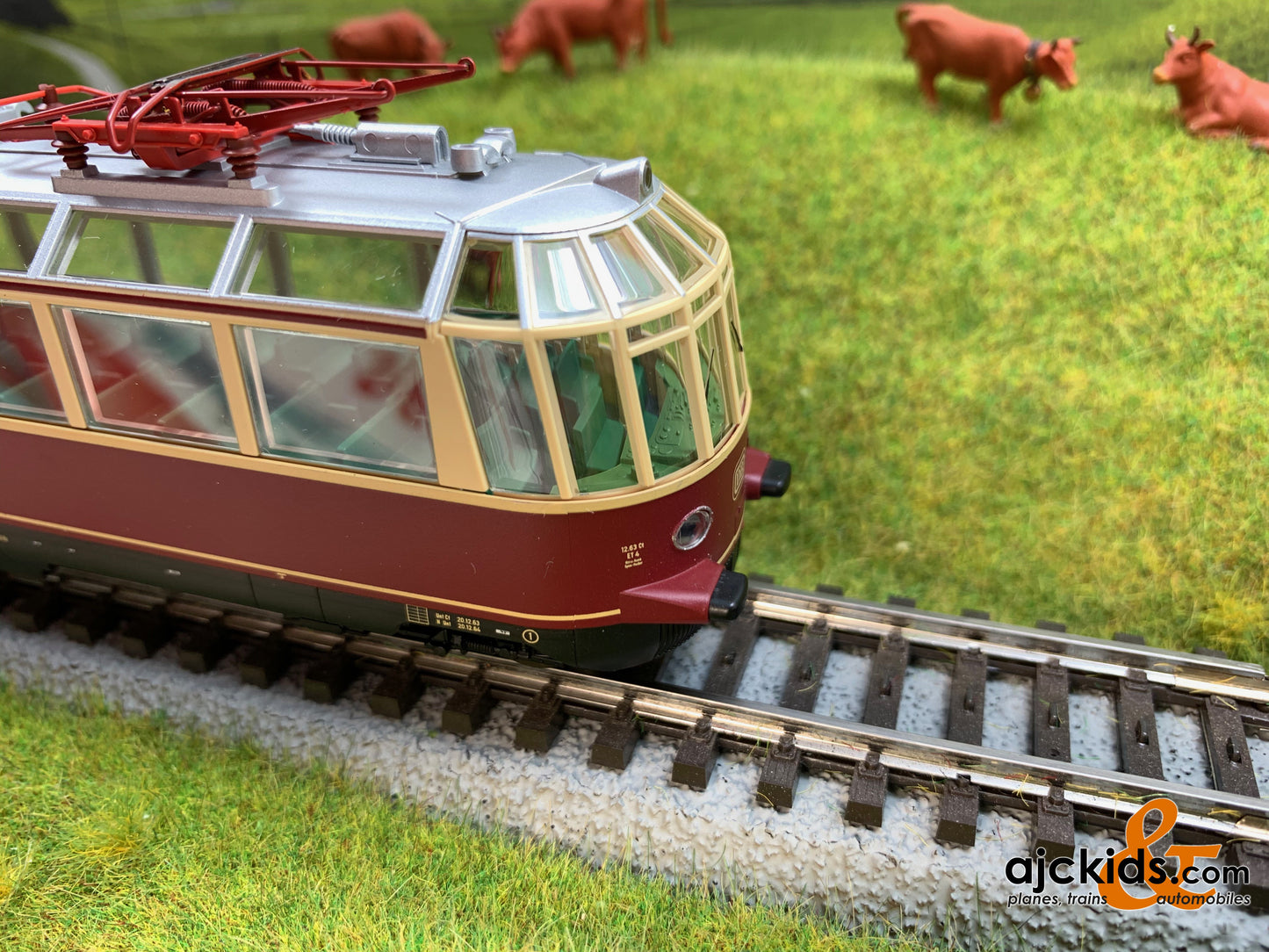Trix 22192 - Powered Observation Rail Car - minor box damage
"Ugly Box Sale": Some MINOR stains on outer box. Your chance to get a great detailed rail car with FULL SOUND for a crazy price.
Prototype: German Federal Railroad (DB) class ET 91 Glass Train electric powered observation car. Crimson / beige paint scheme. The car looks as it did around 1965.
Highlights
- Scale 1:87 reproduction.
- Factory-installed interior lights.
- Warm white LEDs for lighting.
- Special additional announcement for excursion run.
Product description
Model: The car has a DCC digital decoder and factory-installed, controllable sound functions. It also has controlled high-efficiency propulsion. 2 axles in one truck powered. Traction tires. The car has factory-installed interior lighting. The triple headlights and dual red marker lights change over with the direction of travel, will work in conventional operation, and can be controlled digitally. The headlights are maintenance-free, warm white LEDs and the marker lights are maintenance-free, red LEDs. The interior lighting can be dimmed as a digital auxiliary function. The trucks have different wheelbases like the prototype. The car has built-in interior details. The panorama windows are inset. This car is the version with a double-arm pantograph and a single-arm pantograph with a double wiper. Length over the buffers 23.7 cm / 9-5/16".
Charlie's Tips
This model can be found in an AC version in the Märklin H0 assortment under item no. 37581.
Publications
- New Items 2011 - Main Catalog 2011/2012 - Main Catalog 2012/2013Prototype information
At the start of the Thirties, the German State Railroad was feeling the increasing competition from cars and busses. There were therefore different attempts to improve the service to customers and to make traveling more attractive. Two electric powered observation cars were ordered from the car builder Fuchs and from AEG (electrical equipment) in order to give a stimulus to excursion traffic. These cars were intended later as exhibition units for the DRG and were known as the "Glass Trains". These cars had to satisfy special requirements for excursion traffic in the scenically very attractive Bavarian and Austrian Alps: Passengers had to be able to observe the scenery unhindered in all directions from their seats. This required the smallest possible use of opaque building materials in the window and roof area. In addition, as many parts as possible were supposed to be taken from the standard design ET 25 and ET 31 powered rail cars to keep costs down. The builders were able to fulfill these conditions: Large windows on the ends and in the diagonal parts of the roof gave a good view all around. The car bodies were constructed completely of shaped parts and sheet metal welded together and had only a single center entry on both sides of cars. The restroom was located almost at the level of the lower edge of the windows in the area of the center entry in order to have a free view from the seating area. The backs on the passenger seats could be folded over. Two traction motors suspended from the axles powered both wheel sets in the powered truck; the second truck was not powered. Also, the rest of the electrical equipment was arranged under the car floor according to standard design principles. The elT 1998 powered rail car (later road number ET 91 01) was still not completely finished in the electrical area but was presented at the Nürnberg exhibition "100 Years of German Railroading" from July 14 to October 13, 1935. The second powered rail car, elT 1999 (later road number ET 91 02) was delivered in September of 1935 and took part in the great vehicle parade for the 100th anniversary. Both powered rail cars then ran in special service from Munich on the electrified routes of Southern Germany and also soon to Austria. Favorite trips offered then and after World War II were the "Karwendel Excursion" or the "Great Alps Excursion". A bomb attack on Munich during the night of March 9/10, 1943 ended the short career of road number ET 91 02. It burned up completely as a result. It's sibling had been moved to Bichl and was walled in at the locomotive shed there; it survived the war undamaged and soon made itself useful again in excursion service; it was designated from 1968 on as road number 491 001-4 in accordance with UIC rules. Its career came to an abrupt end on December 12, 1995 when it collided with a passenger train at the Garmisch-Partenkirchen station. Since then the heavily damaged "Glass Train" stands in the Augsburg yards and waits for better times.
Features
Warning
| DCC | SX2 | SX | MFX | |
|---|---|---|---|---|
| Headlight(s) | X | X | ||
| Interior lights | X | X | ||
| Surrounding sounds | X | X | ||
| Warning Sound | X | X | ||
| Direct control | X | X | ||
| Light Function1 | X | X |

